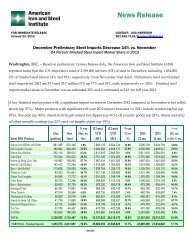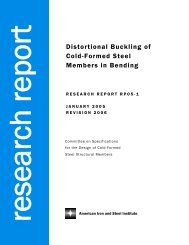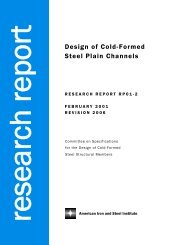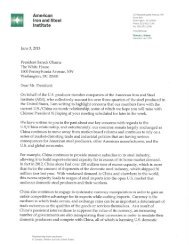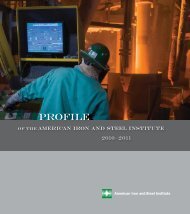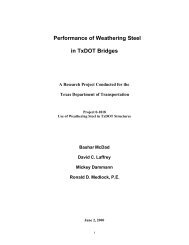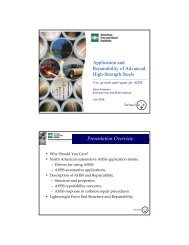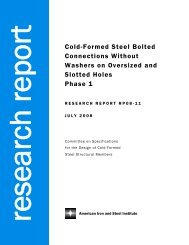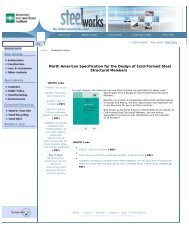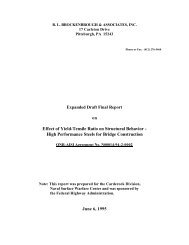Environmental Life Cycle Assessment of Southern Yellow Pine ...
Environmental Life Cycle Assessment of Southern Yellow Pine ...
Environmental Life Cycle Assessment of Southern Yellow Pine ...
Create successful ePaper yourself
Turn your PDF publications into a flip-book with our unique Google optimized e-Paper software.
EXECUTIVE SUMMARY<br />
To better understand the significance <strong>of</strong> the indicator results for Global Climate Change shown in <br />
Table 1, an uncertainty analysis was conducted. This analysis included three contributions to <br />
uncertainty: <br />
<br />
<br />
<br />
Uncertainty related to Stressor Characterization Factors. The Intergovernmental Panel on <br />
Climate Change (IPCC) estimates that GWP factors for direct effects have an uncertainty <br />
<strong>of</strong> ±35% for the 5 to 95% confidence range. 20 This uncertainty was used for all S-‐CFs for <br />
this category indicator. <br />
Uncertainty related to inventory data. There was no way to evaluate the uncertainty <br />
related to inventory data in these scenarios. An uncertainty <strong>of</strong> ±15% for the 5 to 95% <br />
(90%) confidence range was assumed, considered to be reasonable given the overall data <br />
quality <strong>of</strong> the study, which used specific data for most <strong>of</strong> the key unit processes. <br />
Additional uncertainty in the environmental characterization factors used for sulfur <br />
dioxide emissions. This includes the uncertainty related to the Precursor Conversion <br />
Factor (P-‐CF) for sulfur dioxide forming tropospheric sulfate aerosols, and the uncertainty <br />
related to the trends in projections <strong>of</strong> these emissions over time. Recent research in <br />
establishing the P-‐CF independently found a factor very close to the value used in this <br />
study, suggesting the uncertainty is low. Furthermore, the sensitivity <strong>of</strong> results to the <br />
projections <strong>of</strong> sulfur dioxide emissions over time was found to be low, as described in <br />
Section 5 <strong>of</strong> the report body. 21,22 An additional uncertainty <strong>of</strong> ±15% for the 5 to 95% <br />
(90%) confidence range was used for results from sulfur dioxide emissions, in addition to <br />
the ±35% associated with GWPs for other substances. <br />
These three sources <strong>of</strong> uncertainty were combined in quadrature to obtain an overall uncertainty <strong>of</strong> <br />
±38% (±41% for the characterization <strong>of</strong> sulfur dioxide emissions) for both the BAU and SPR scenarios, <br />
which was used for the 90% confidence range. The category indicator results are shown in a whisker <br />
plot in Figure 3. <br />
20 Intergovernmental Panel on Climate Change: Fourth <strong>Assessment</strong> Report. Climate Change 2007: Working Group I: The <br />
Physical Science Basis. 2.10.2: Direct Global Warming Potentials. Retrieved on 8/2/2012 from <br />
http://www.ipcc.ch/publications_and_data/ar4/wg1/en/ch2s2-‐10-‐2.html <br />
21 Shindell, D.T., G. Faluvegi, D. M. Koch, G. A. Schmidt, N. Unger, S. E. Bauer. Improved Attribution <strong>of</strong> Climate Forcing to <br />
Emissions. 30 October 2009. Vol 326, 716-‐719. Science Magazine. <br />
22 Based on SCS internal data. <br />
April 2013 | ©SCS Global Services <br />
ES-‐ 11



